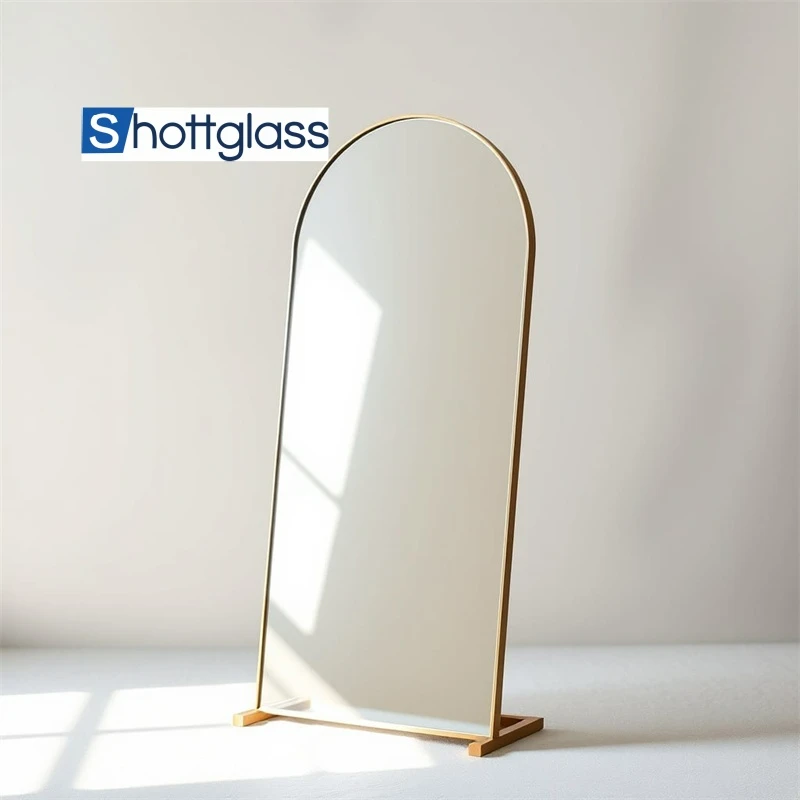Oct . 12, 2024 10:46 Back to list
Understanding Reflective Glass: Types, Applications, and Advantages
Reflective glass has become an essential material in modern architecture and design, offering both aesthetic appeal and functional benefits. With its ability to control heat and light while adding a sleek, contemporary look to buildings, it has found widespread use in commercial and residential projects. In this article, we will explore reflective glass, the different types available, and its applications and advantages in various industries.
What is Reflective Glass?
Reflective glass is a type of coated glass designed to reflect a significant portion of the sun's light, reducing heat gain and glare inside a building. This is achieved by applying a thin metallic layer to the surface of the glass, which reflects sunlight and prevents excessive heat from entering the interior. The result is a more comfortable indoor environment with reduced reliance on air conditioning, leading to energy savings. Additionally, reflective glass is often used to provide privacy as it creates a mirror-like appearance on the outside, blocking the view from external onlookers.
Types of Reflective Glass
Reflective glass comes in different variations to suit specific needs. The two most commonly used types are tinted and reflective glass and transparent reflective glass.
Tinted and Reflective Glass: This type of reflective glass has a colored tint, which further enhances its ability to block out sunlight and heat. The tint can come in various shades, such as bronze, grey, or blue, depending on the design preference. Tinted reflective glass is popular in high-rise buildings and commercial spaces due to its ability to provide a striking visual effect while offering excellent heat insulation.
Transparent Reflective Glass: While tinted and reflective glass has a darker appearance, transparent reflective glass offers a more neutral look with minimal color distortion. It still provides the reflective properties needed to control light and heat, but it maintains a clearer, more natural view from the inside. Transparent reflective glass is often used in projects where maintaining visibility is crucial, such as in office buildings or retail stores.
Applications and Advantages of Reflective Glass
Reflective glass is widely used in both commercial and residential buildings, offering numerous advantages across various applications:
Energy Efficiency: One of the primary benefits of reflective glass is its ability to reduce heat gain, which lowers cooling costs for buildings. This makes it a preferred choice in regions with high temperatures or intense sunlight.
Privacy and Aesthetics: The reflective surface of the glass provides privacy during the day by acting as a mirror, while also giving buildings a sleek and modern appearance.
Comfort: By reducing glare and controlling the amount of heat entering a building, reflective glass helps create a more comfortable indoor environment.
Durability: The coatings used on tinted and reflective glass and transparent reflective glass are designed to last, ensuring that the glass maintains its appearance and performance over time.
Reflective glass is commonly used in the following applications:
Commercial Buildings: High-rise office towers and shopping centers frequently use reflective glass to manage light and heat, improve energy efficiency, and enhance their architectural appeal.
Residential Projects: Homeowners are increasingly choosing tinted and reflective glass or transparent reflective glass for windows and façades to reduce energy bills while adding a touch of modernity to their homes.
Automotive Industry: Reflective glass is also used in the automotive sector to reduce heat inside vehicles, making it a key material in windshields and windows.
Solar Control: Reflective glass is used in specialized solar control systems, where its ability to manage light and heat is crucial for maximizing energy efficiency.
Why Reflective Glass is a Smart Choice
Choosing reflective glass for your project provides several long-term benefits. Not only does it offer superior energy efficiency, but it also enhances the overall aesthetic of any building. With options like tinted and reflective glass and transparent reflective glass, architects and designers can tailor their selections to meet specific design and functional requirements. Furthermore, the durability and low-maintenance qualities of reflective glass make it a cost-effective choice for both short-term and long-term projects.
In conclusion, reflective glass is a versatile and valuable material that offers a range of benefits, from energy efficiency to improved privacy and aesthetics. Whether you opt for tinted and reflective glass or transparent reflective glass, this innovative product will significantly enhance the performance and appearance of your building.
-
Types of Reflective Glass
NewsNov.17,2025
-
What Is Dichroic Glass?
NewsNov.17,2025
-
Smart LED mirrors can have touch controls
NewsNov.17,2025
-
Laminated glass improves energy efficiency
NewsNov.17,2025
-
Insulated glass enhances building comfort
NewsNov.17,2025
-
Acid etched glass offers elegant privacy
NewsNov.17,2025
Related PRODUCTS














